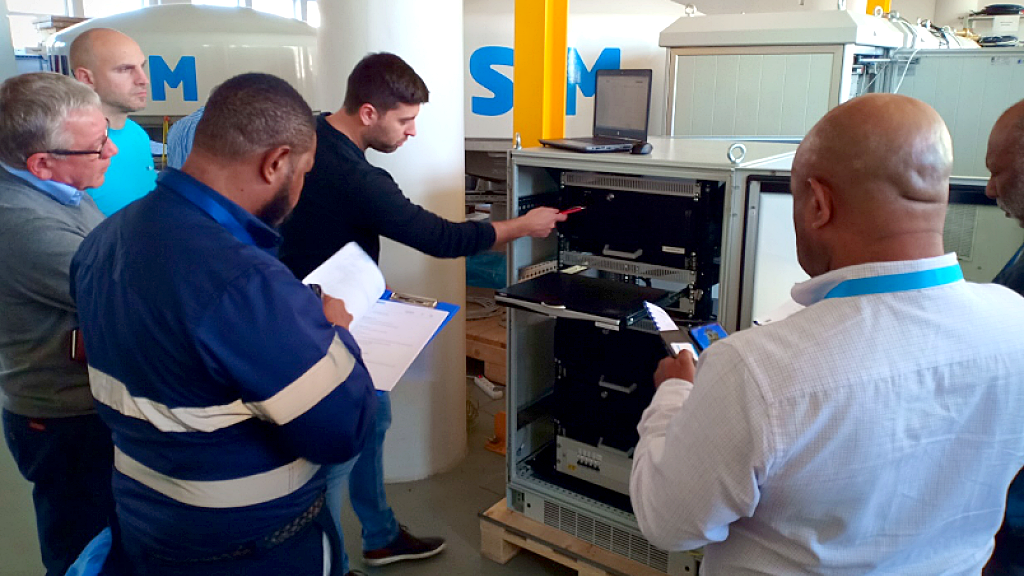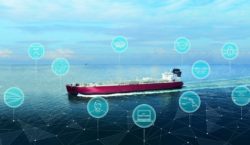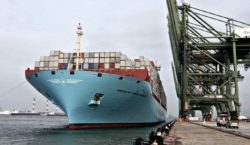
With over 600 islands spanning a total sea area of 3.1 million square kilometers and 65% of its population residing in in coastal areas, Papua New Guinea (PNG) relies heavily on its network of coastal shipping services. Passenger and cargo services allow citizens to access health, education and other services essential for inclusive growth. Amplifying the crucial role of coastal shipping are the challenging topographic and climate conditions that hamper the expansion of the road network. But to navigate vessels safely through these coastal areas, maritime safety and efficiency needs to be improved and upgraded. Although the vessels on major routes usually carry radar and a global positioning system, there are safety risks of straying outside key passages and many channels rely on local knowledge.
The unit head for portfolio management of ADB’s PNG Resident Mission, Maria Theresa Villareal said “Prior to ADB’s involvement in the maritime sector, many of the country’s navigational aids, such as buoys, beacon and light towers, had deteriorated because of insufficient maintenance, weather damage, and volcanic damage. With the increasing number of shipping vessels and island communities’ sea travel it was high time to improve maritime safety,”
ADB’s US$41.50 million Maritime & Waterways Safety Project, approved in December 2012, was designed to improve the environment for safe and economic maritime transport, by investing in a nationwide network of remote coastal stations for the monitoring of shipping through coastal waters. PNG’s National Maritime Safety Authority (NMSA) is the executing agency.
Harnessing Norwegian expertise and experience
Norway’s Vissim AS and M-NAV Solutions, headquartered in the Philippines, joined forces to offer their expertise to Papua New Guinea, via the ADB project. As one of the world’s leading maritime nations, Norway is renowned for its high standards of maritime safety. It is easy to see why coastal shipping is so important for Norway: while overland routes would easily be hundreds of kilometers around fjords and through national forests, ferries allow to shorten transport routes tremendously. The scope of the ADB project includes the design and installation of a national network of fifteen coastal stations to monitor shipping sailing through coastal waters, using Automatic Identification System (AIS) technology. AIS is a digital very high frequency (VHF) data broadcast and interrogation technology used for ship and shore-based monitoring and tracking and is mandated by the International Maritime Organization.
The complex requirements of the project and the remoteness of the coastal station sites presented several unique technical challenges that could not be met by off-the-shelf equipment. As such, Vissim and M-NAV developed a concept design for a system that would allow NMSA to meet these challenges and perform in a difficult and remote environment with a high level of reliability, not least by ensuring that equipment was selected for low power consumption, designed for ten days of autonomy. Enclosures that cover the equipments were designed to be lightweight and durable, allowing for transport to difficult-to-access sites by helicopter and for ease of installation. Enclosure and equipment layout were designed to allowing cooling through efficient natural airflow and ventilation, avoiding the use of power-hungry air conditioning.
Vissim and M-NAV were awarded the contract on in June 2019. The contract was signed in September 2019. “Working with NMSA and ADB on this project has been a very positive experience. The process towards contract agreement was transparent and professionally handled. The engagement and positive drive from all parties involved have resulted in a huge improvement of maritime awareness and safety in PNG economic zone,” said Vissim’s Director for Asia, Håvard Odden.
Full steam ahead despite COVID-19
After successful completion of the Factory Acceptance Tests, equipment was packed and shipped to PNG, in late 2019. The appearance of COVID-19 caused several issues in the preliminary stages, however installation of the first site was still completed in May 2020, with the remaining sites completed in July 2020. The first site installed was at Burns Peak, in the capital Port Moresby. It was one of the few units to be installed in a major city. Preliminary results of the system were very encouraging, with AIS targets detected at a range of up to 90 nautical miles, far exceeding the results expected from preliminary VHF/AIS range modelling done during the design phases. PNG’s NMSA now has a system that provides surveillance and monitoring capabilities for a large portion of their coastal waters. It allows the NMSA to monitor and track the movement of vessels, identify and deal with potential non-compliance, assist with Search and Rescue operations and mitigate the risk of shipping related incidents to coastal communities and the marine environment. Regional and international maritime transport services will benefit too.
ADB, Papua New Guinea and Europe
ADB has been working with Papua New Guinea since 1971 and is the country’s largest multilateral development partner. Since 1971, ADB has committed loans totaling $2.9 billion, grants of $214.4 million, and technical assistance worth $81.3 million for PNG. The blueprint for ADB’s operations in PNG, the new Country Partnership Strategy (2021-2025), endorsed in October 2020, focuses on developing the transport and energy sectors; reforming state-owned enterprises; promoting private sector development and investment; and assisting the government in achieving their development goals. ADB’s European Representative Office (ERO), based in Frankfurt, Germany works with companies and governments across ADB’s 17 European member countries to facilitate the application of European expertise in ADB projects in its developing member countries.



